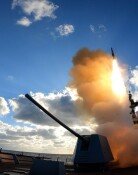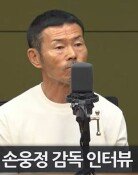The Waning Culture of Burial
Something foreigners find strange in Korea is the massive number of tombs across the nation. When traveling along an expressway, an endless parade of tombs big and small can be seen. Burial is a time-honored tradition in Korea, and few other countries have so many of their deceased occupying such sunny terrain as Korea. In the West, tombs at public cemeteries account for the majority of burial places, and they are generally located in neighborhoods around villages. In contrast, Koreans do not mind building tombs even on steep places or mountaintops as long as such sites are deemed proper according to topography-based feng shui. The belief that people will have luck only if their ancestors burial sites are placed at the ideal spots is most deeply rooted in Korea among the three Asian nations that follow feng shui.
According to a survey conducted by the Health and Welfare Ministry by using aerial photos and the geographic information system, the collective area covered by tombs is massive and the number of tombs is 14.35 million. Previously, the government estimated the number of tombs nationwide at 20 million based on data compiled in 1978 by Seoul National University. But the real figure is far smaller. Nonetheless, the country has added 80,000 tombs every year over the past five years.
Because Korean preference for burial has drastically waned, the area covered with burial sites is also gradually declining in size. According to the Health and Welfare Ministry, cremation (52.6 percent) was more popular than burial (47.4 percent) for the first time in 2005. Statistics from 2008 suggest that the portion of cremation was 61.9 percent. The Korea Institute for Health and Social Affairs estimates that the cremation rate will reach 68.4 percent this year. This is still far behind Japans 99.9 percent but represents a sea of change from the 1970s, when the figure was just 10 percent. More societal leaders are opting for cremation as well.
Korean preference for burial, which is deeply rooted in the people like a religious belief, has apparently declined because of the emergence of a new generation of young people who value living over Confucian beliefs and rites. Urban dwellers have no time or economic leeway to buy expensive burial sites, mow weeds on every ceremonial date, and hold ancestral rituals, at a time when they have a hard time making ends meet. The number of older people who visit the scattered tombs of their ancestors four to five generations ago is also declining. The trend also reflects an increase in the number of charnel houses and of tombs without familiar affiliation. The Korean culture of burial, which has long dominated society since ancient times, is waning hopelessly due to the passage of time.
Editorial Writer Chung Sung-hee (shchung@donga.com)







